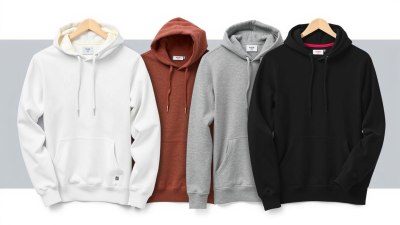Why Your Favorite Hoodie Only Feels Right in One Exact Temperature
Explore the science and psychology behind why your favorite hoodie feels perfect only at a specific temperature range.

We all have that one hoodie—the one that feels like a gentle hug, a shield from the world, and the perfect companion for almost any occasion. Yet, strangely, this beloved garment seems to come alive only at a very particular temperature. Too warm, and it feels stifling; too cold, and it just doesn’t provide enough comfort. Why does your favorite hoodie only feel right at one exact temperature?
At first glance, this observation may seem trivial or simply a matter of personal preference. However, the reasons behind this phenomenon delve deeply into various scientific and psychological factors, including fabric technology, human thermoregulation, sensory perception, and even emotional associations. Unlocking these elements helps understand not only this curious clothing conundrum but also the broader interaction between humans and their apparel.
The Science of Thermoregulation and Clothing
Humans are warm-blooded creatures with a relatively stable body temperature of approximately 37°C (98.6°F). To maintain this internal temperature, our bodies employ thermoregulation — processes that balance heat production and heat loss. Clothing significantly influences this balance, acting as an insulating layer that either retains or dissipates heat.
When you wear a hoodie, it creates a microclimate around your torso. This microclimate helps trap the heat your body generates, especially through respiration and metabolism, providing warmth. However, this insulation is finely balanced. If the surrounding temperature rises above the hoodie’s optimal range, the trapped heat can become uncomfortable. Conversely, in colder conditions than the hoodie’s design can handle, it may fail to retain enough heat, leaving you chilled.
Most hoodies are designed using materials such as cotton, polyester, fleece, or blends that balance breathability and insulation. These materials’ thermal properties, including thickness, weave tightness, and moisture-wicking capabilities, determine how much heat is retained or released. This explains why your favorite hoodie, made from a specific fabric composition and weight, performs particularly well at a narrow temperature band.
Fabric Material and Thermal Dynamics
Let’s explore the materials most commonly used in hoodies and their impact on thermal comfort:
Cotton: Cotton is breathable and comfortable, making it excellent for moderate weather conditions. It absorbs moisture well but can become heavy and cold when wet, making it less ideal in chilly or damp weather.
Fleece: Often made from polyester, fleece has excellent insulating properties, trapping air that keeps heat close to the body. It’s lightweight and dries quickly, perfect for colder conditions.
Polyester blends: These often provide moisture-wicking properties, helping move sweat away from the skin. The blend of fibers can add to the garment’s ability to maintain warmth without overheating.
When you wear a hoodie made from one of these materials, its effectiveness hinges on environmental temperature and humidity. Your favorite hoodie likely hits the sweet spot in terms of thermal properties at one ideal temperature, where it provides insulation without overheating.
The Role of Fit and Layering
Fit directly influences the amount of air retained between your body and the hoodie, which affects insulation. A snug-fitting hoodie reduces air space and can trap more heat close to the body. However, this also means less airflow, increasing the risk of overheating if the temperature fluctuates slightly above the comfort zone.
On the other hand, a looser hoodie creates more air space, which can serve as an additional buffer zone but may not retain heat as effectively. This dynamic changes depending on whether you are layering underneath. Your favorite hoodie may feel perfect alone at a certain temperature but might be too warm or chilly if the layers below change.
Human Sensory Perception and Thermal Comfort
Thermal comfort isn’t purely a matter of physical temperature; it’s also closely tied to sensory perception. Our skin’s nerve endings detect not only the ambient temperature but also humidity, air movement, and the fabric’s texture. The tactile feedback from your hoodie contributes to how comfortable it feels.
The “softness” and “weight” sensation, combined with the slight pressure of the fabric on your skin, contribute to a cozy feeling that becomes more pronounced at specific temperatures. If the temperature rises, the hoodie’s texture may feel sticky or clammy; if it drops, the hoodie might feel rough or insufficiently warm, diminishing comfort.
Psychological and Emotional Connections
Beyond the physical and sensory factors, your favorite hoodie likely carries emotional significance. Our brains associate garments with memories, moods, and feelings of security. The psychological connection means you might perceive the hoodie as “perfect” at a temperature that aligns with prior positive experiences wearing it.
This interplay between memory and sensory input can cause a subtle but powerful preference for wearing that hoodie at one exact temperature. At this point, your body and mind find harmonious balance, making the experience almost ritualistic and soothing.
Environmental Influences and Adaptation
Weather conditions such as wind, humidity, and sunlight alter how your hoodie feels, even at the same temperature. For example, a 65°F (18°C) day with a strong breeze can feel cooler than a calm day at the same temperature. This means your hoodie might feel perfect only under specific weather conditions, coinciding with that ideal temperature range.
Additionally, your body’s adaptation level plays a role. If you are acclimated to cold weather, you might find your hoodie comfortable at lower temperatures than someone else. Similarly, a slight change in your activity level—like walking versus sitting—modifies heat production, influencing how well your hoodie performs.
Design Elements and Practical Features
Hoodies incorporate various design elements like hoods, pockets, zippers, cuffs, and ribbing—all affecting thermal performance and comfort. For instance, a zippered hoodie allows you to vent heat quickly, making it adaptable to a wider temperature range. However, if your favorite hoodie lacks these adjustable features, it might feel restrictive outside its sweet spot.
Pockets that keep your hands warm or a hood that shields your head can add to the ideal temperature experience. Conversely, if your hoodie’s design traps moisture or restricts airflow too much, comfort drops quickly when conditions change.
Care, Wear, and Fabric Aging
The condition of your hoodie influences how it feels and performs. Frequent washing softens cotton fibers but might reduce insulation slightly by breaking down fleece’s fluffiness. Wear and tear can also thin fabric or cause piling, changing thermal properties.
A well-maintained hoodie feels more comfortable and consistent. If your favorite hoodie has aged just right to balance softness, insulation, and fit, its ideal temperature range becomes even more pronounced—a unique signature of the garment itself.
Understanding Personal Preferences and Sensitivities
People vary widely in their sensitivity to temperature and tactile sensations. Factors like metabolism, body fat percentage, circulation, and health conditions influence thermal comfort. Your unique physiology interacts with your hoodie’s characteristics to create that singular ideal temperature.
Someone who runs cold may only ever find a fleece-lined hoodie comfortable, while someone else may prefer a lighter cotton hoodie. Your favorite hoodie’s specific material and weave align with your body’s responses in such a way that only within a narrow temperature window does it feel just right.
Combining Functionality and Fashion
Finally, the way your favorite hoodie fits in your lifestyle impacts its “just right” feeling. Hoodies often serve dual roles—functional warmth and self-expression. When you look good and feel comfortable, perception skews positively, reinforcing the hoodie’s ideal temperature sensation.
Choosing the perfect hoodie involves balancing style, comfort, and practicality. Some designers optimize garments for a broad range, but your personal favorite might prioritize fabric hand-feel or style cues that align with that one temperature you instinctively enjoy.
Summary of Why This Happens
In essence, your favorite hoodie feels right in one exact temperature because of a complex combination of:
- Thermal insulation properties of its materials
- Fit and the resulting microclimate around your body
- Sensory perception including tactile sensations and moisture handling
- Psychological associations and emotional comfort
- Environmental conditions and your body’s adaptation state
- Design features impacting versatility and airflow
- The garment’s wear, care, and fabric aging
- Your personal physiological makeup and preferences
All these factors intersect at a particular temperature zone, making the hoodie feel impeccable only there. Understanding this interplay deepens appreciation not just for a piece of clothing but for the nuanced relationship between humans and what they wear every day.
So next time you reach for that favorite hoodie and notice it feels perfect only under certain conditions, remember it’s not just magic or mood. It’s a finely tuned dance of science, sensation, and sentiment culminating in a uniquely cozy experience reserved just for that temperature.











